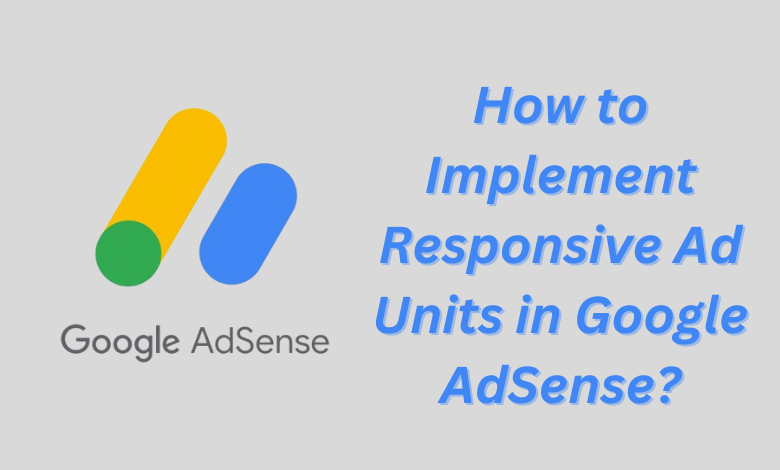How to Implement Responsive Ad Units in Google AdSense?

In today’s digital landscape, online advertising is essential for monetizing websites and maximizing revenue streams. Google AdSense stands out as a premier platform for publishers, offering a seamless integration of ads into web content. Among its versatile features are responsive ad units, which adapt dynamically to different screen sizes and devices, ensuring optimal visibility and engagement. Implementing responsive ad units in Google AdSense requires careful configuration and attention to detail. In this guide, we’ll delve into the intricacies of setting up responsive ad units while addressing common issues encountered along the way.
Steps in Implementing Responsive Ad Units
Step 1: Accessing Your Google AdSense Account
Log-in to your Google AdSense account and navigate to the “Ads” tab and select “Ad units” from the sidebar menu.
Step 2: Creating a New Ad Unit
Click on the “+ New ad unit” button to initiate the creation process. Choose the “Responsive” ad type from the available options.
Step 3: Configuring Ad Settings
Customize the ad settings according to your preferences, including ad size, style, and ad type. Ensure that the “Responsive” option is selected to enable dynamic adaptation across various devices.
Step 4: Generating the Ad Code
Once you’re done configuring the ad settings, hit “Save” and click on the “get code” button. Google AdSense will generate a snippet of code containing your responsive ad unit settings.
Step 5: Integrating the Ad Code into Your Website
Copy the generated ad code and paste it into the HTML source code of your website or content management system (CMS). Place the ad code within the <head> or <body> section of your web pages, depending on your layout preferences.
Step 6: Testing Responsiveness
Preview your website across different devices and screen sizes to ensure that the responsive ad units adapt seamlessly. Use Google’s Mobile-Friendly Test tool to verify responsiveness and identify any potential issues.
Common Issues and Troubleshooting:
1. Ad Placement:
Ensure that responsive ad units are strategically placed within your content to maximize visibility without compromising user experience. As much as possible, do not overcrowd your pages with too many ads for this may deter visitors and can affect performance.
2. Ad Blocking:
Users may employ ad-blocking software that prevents ads from displaying on your website. Encourage visitors to whitelist your site or consider alternative monetization strategies to mitigate revenue loss.
3. Page Speed:
Excessive ad scripts and bulky content can slow down page loading times, adversely impacting user experience and search engine rankings. Optimize images, minify code, and utilize lazy loading techniques to enhance page speed.
4. Ad Relevance:
Continuously monitor how your responsive ad units are performing and make adjustments to targeting settings to ensure they are aligned with your audience’s interest. Experiment with different ad formats and sizes to optimize engagement and click-through rates.
By following these steps and addressing common issues, you can effectively implement responsive ad units in Google AdSense, enhancing monetization opportunities and maximizing revenue potential. Stay proactive in monitoring ad performance and user experience to continually optimize your ad strategy for success in the ever-evolving digital landscape.
For more Google AdSense features, check www.intogeeks.com.




